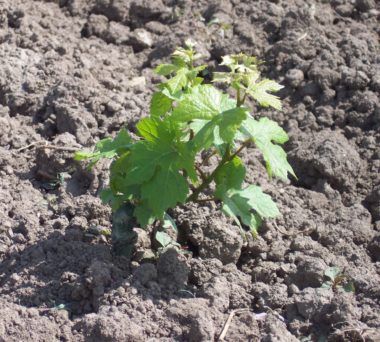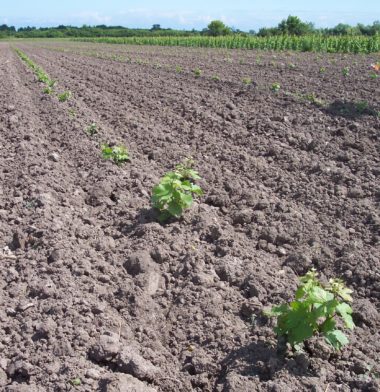Planting a new vineyard is always a time of apprehension and crossed fingers. Could these little wax-covered sticks present us with an opportunity to produce some world class wines? Only time will tell.
In a moment of weakness, it was decided last year amongst the Lowrey Vineyards brain trust (and I use that term very loosely) to plant nine more rows of Pinot Noir. If you’ve read previous entries of this blog, you’ve no doubt heard me describe some of the challenges we’ve faced growing Pinot over the years. So why opt for more punishment you say? I found myself wondering that exact thing as we planted the vines this past Tuesday. Why not plant something easy to grow like Chardonnay or Cabernet Franc? Therein lies the allure of Pinot Noir. It gets in your blood, it messes with your mind and it leads to irrational decisions. I liken Pinot to a parasite who’s goal is not to have its host die, but rather suffer just enough to allow itself to thrive.
In a nutshell, the thing that makes Pinot so tough to grow are it’s tight little clusters of thin-skinned berries. These clusters are like ticking time bombs just waiting for the opportunity to explode. If one single berry in the middle of that cluster were to split, the whole bunch is usually compromised with botrytis or sour rot. Once this rot has taken hold within the canopy, it spreads like wildfire from cluster to cluster aided by the dreaded fruit fly. This sad fate has befallen many of the most promising crops of Pinot Noir. The end, however, more than justifies the means. If you can survive the gauntlet, Pinot Noir will reward your hard work. That is why we planted the nine rows: a shot at glory!
To add complexity to future wines we decided to experiment with different clones and rootstocks in this block. Our older Pinot vines are all famed Dijon clone 115 on S04 rootstock. In the new planting, we’ve included equal portions of clones 777, 667 and more 115. The two new clones are known to have slightly looser clusters and thicker skins, producing wines with stronger black fruit and gamey notes. To help control vine growth, we had the vines grafted to lower vigour rootstocks (101-14 and 3309) and planted them more densely in a patch of clay-based soil.
Since Tuesday, we’ve thankfully had two substantial rainfall’s to help the little guys along. I would like to thank Wes Weins and his staff at Gemmrich W. Nursery for providing us with vines grown to our exact specifications.


